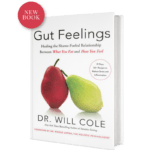Effects of Hyperbaric Oxygen Therapy + How Long They Last

I’ve spoken before about hyperbaric oxygen therapy (HBOT), a unique treatment option for wound healing, chronic pain, anemia, exercise recovery, and other conditions, that involves breathing pure oxygen from within a pressurized chamber.
I wanted to address one of the biggest questions that comes up when my functional medicine clients are exploring this therapy: how long do the effects last?
This is an important consideration, and while the answer does vary depending on an individual’s condition and other factors, there are a few key ideas to keep in mind that will help you better understand how hyperbaric oxygen therapy might work for you, and what to expect.
A Brief Overview Of Hyperbaric Oxygen Therapy
Hyperbaric oxygen therapy, or HBOT, is a treatment approach that involves getting inside a tube-like, pressurized chamber, and breathing 100% pure oxygen, typically for around two hours.
The air pressure in a hyperbaric chamber is about 2-3 times higher than it is in our normal atmosphere. In this pressurized environment, our bodies are able to take in much higher concentrations of oxygen than usual, which in turn enhances our bodies’ healing and regenerative capabilities (1).
HBOT centers around using oxygen to heal. But really, we’re using oxygen to tap into our own innate healing capacity. This is in keeping with a core philosophy of functional medicine: treat the root cause, from within, rather than just treating the symptoms.
How does it work? The increased pressure in a hyperbaric chamber forces greater concentrations of oxygen into your bloodstream, where it is then distributed to your cells, tissues, and organs.
With this supercharged oxygen supply, your entire body now essentially has a bigger, more powerful, and more efficient team that is ready to go to work on reducing inflammation, repairing tissues, producing stem cells, healing wounds, and fighting infections.
Hyperbaric oxygen therapy is used in both conventional and alternative medicine for different conditions, including chronic wounds, carbon monoxide poisoning, decompression sickness, cognitive impairments, immune system dysfunction, and long COVID.
What Are The Effects of HBOT?
Here are a few of the most common benefits and possible side effects of the therapy.
The Positives
Research has demonstrated a number of different benefits of hyperbaric oxygen therapy, with new uses and positive effects continuing to be explored.
General positive effects of HBOT may include:
Based on the available body of research, the FDA has currently approved treatment with HBOT for the following conditions (5):
Of course, there are many conditions beyond those listed above that may be helped by the effects of HBOT. Reducing inflammation, enhancing tissue repair, and boosting the immune system, along with the other mechanistic effects of hyperbaric oxygen therapy, have far-reaching benefits and implications for chronic illness.
HBOT is used in many holistic and functional medicine centers for various neurological and mental health conditions, brain injury, sports injury recovery, migraines, chronic pain, and anti-aging (6 7, 8, 9).
Hyperbaric oxygen therapy has also shown promise for treating the psychological, physiological, and cognitive effects of long COVID (10).
The Downsides
Hyperbaric oxygen therapy is considered to be safe for most people. However, this is a therapy that should be considered on a highly individual basis. HBOT is not safe, or is less safe, for people with certain chronic health conditions. Acute conditions, like having a cold or a fever, can also increase the risk of side effects or complications.
It’s important to have a thorough consultation with a practitioner before starting hyperbaric oxygen therapy, so that they can help determine if it’s a good option for you.
There are some mild and temporary side effects that may occur as a result of the pressurized environment.
One of the most common is a feeling of pressure or fullness in the ears, or the sensation of your ears popping, similar to what you might experience when flying or driving through mountains. Some people also report feeling tired or lightheaded after a session.
If you tend to be claustrophobic or become anxious in small, enclosed spaces, HBOT may trigger anxiety or feelings of panic.
More serious (and rare) complications may include:
The risk of these and other more serious complications is low for most people, but increases if you have certain underlying medical conditions. HBOT is not recommended for those who have severe congestive heart failure, a collapsed lung, or uncontrolled high blood pressure (11). A recent ear surgery or injury, or a current cold, sinus infection, or fever, also increase the risk of side effects. For those with diabetes, blood sugar levels should be closely monitored and assessed prior to treatment.
How Long The Effects Last
So, how long can you expect the positive– or negative– effects of HBOT to last? It depends, but here are a few factors to keep in mind.
Both the duration of treatment and the duration of its effects vary depending on an individual’s condition and overall health profile. Based on your symptoms and goals, your provider will come up with a treatment plan that specifies the number of sessions being recommended, and the frequency and length of each. This may be anywhere from two to 40 or more sessions.
Because of the wide range of conditions being treated and specific protocols, it’s hard to say exactly how long benefits will last. But a very important aspect to consider is that HBOT works by stimulating and enhancing your body’s natural healing capabilities. Broadly speaking, any therapy that allows you to repair and regenerate from within is likely to offer longer lasting benefits than a treatment, such as a drug, that focuses on a specific symptom.
Some treatment plans will follow a tapered approach, starting with more frequent treatments, and eventually moving into a maintenance phase where sessions are more spread out. Occasional sessions after a more intensive protocol may help to extend the duration of benefits.
A promising follow-up study on a group of individuals whose long COVID symptoms were improved with HBOT found that benefits continued a year after treatment (12).
In this case, participants underwent daily sessions for 40 days, and then did not have any hyperbaric oxygen therapy for a year. The positive effects that were shown after the treatment period, including improved sleep and cognitive function and reduced pain levels, generally persisted at the one year mark.
The effects of HBOT on chronic wound healing, brain injuries, and other conditions are also thought to be long-lasting, as they can not only help to heal existing problems but reduce the likelihood of recurrence. Overall, effects may last for weeks, months, years, or even be permanent, depending on your condition and other individual factors (13).
When it comes to negative side effects, on the other hand, the more common ones are likely to be short-term. Ear pressure or popping may dissipate immediately upon exiting the hyperbaric chamber, or within a few hours. Some people experience fatigue or lightheadedness following a session, which isn’t likely to last more than a day.
Is It Right For You?
Hyperbaric oxygen therapy is safe for most people, and can be effective for a wide range of conditions and concerns, helping your body to heal from within by reducing inflammation, improving blood circulation, repairing tissues, stimulating the production of new stem cells, and more.
All of these positive effects can trigger a cascade of healing and regenerative functions, and benefits may therefore last for several months to a year or even longer following a treatment protocol. On the flipside, most side effects are temporary and related to being within a pressurized environment.
Still, it’s important to remember that hyperbaric oxygen therapy is not for everyone. Certain underlying medical conditions can significantly increase your risk for serious complications or side effects, which is why it’s always important to speak to a practitioner about whether or not this therapy is appropriate for you.
Not Sure? If You’re Looking For Support In Your Next Steps…
Consider taking the functional medicine perspective on your condition and your treatment options, and booking a virtual consultation with our team.
Start Your Health Journey Today
FUNCTIONAL MEDICINE CONSULTATIONS FOR PEOPLE AROUND THE WORLD
- Ortega MA, Fraile-Martinez O, García-Montero C, et al. A General Overview on the Hyperbaric Oxygen Therapy: Applications, Mechanisms and Translational Opportunities. Medicina (Kaunas). 2021;57(9):864. Published 2021 Aug 24. doi:10.3390/medicina57090864
- Woo J, Min JH, Lee YH, Roh HT. Effects of Hyperbaric Oxygen Therapy on Inflammation, Oxidative/Antioxidant Balance, and Muscle Damage after Acute Exercise in Normobaric, Normoxic and Hypobaric, Hypoxic Environments: A Pilot Study. Int J Environ Res Public Health. 2020;17(20):7377. Published 2020 Oct 10. doi:10.3390/ijerph17207377
- Lalieu RC, Bol Raap RD, Smit C, Dubois EFL, van Hulst RA. Hyperbaric Oxygen Therapy for Nonhealing Wounds-A Long-term Retrospective Cohort Study. Adv Skin Wound Care. 2023;36(6):304-310. doi:10.1097/01.ASW.0000922696.61546.31
- Goyal A, Chonis T, Bhyan P, et al. Hyperbaric Cardiovascular Effects. [Updated 2023 Aug 28]. In: StatPearls [Internet]. Treasure Island (FL): StatPearls Publishing; 2024 Jan-. Available from: https://www.ncbi.nlm.nih.gov/books/NBK482231/
- https://www.fda.gov/consumers/consumer-updates/hyperbaric-oxygen-therapy-get-facts
- Mehrotra AN, Agarwal N, Jain BS, et al. A study of serum lipids in diabetic retinopathy. Mater Med Pol. 1988;20(3):165-167.
- Chen CY, Chou WY, Ko JY, Lee MS, Wu RW. Early Recovery of Exercise-Related Muscular Injury by HBOT. Biomed Res Int. 2019;2019:6289380. Published 2019 May 29. doi:10.1155/2019/6289380
- Chen X, You J, Ma H, Zhou M, Huang C. Efficacy and safety of hyperbaric oxygen therapy for fibromyalgia: a systematic review and meta-analysis. BMJ Open. 2023;13(1):e062322. Published 2023 Jan 23. doi:10.1136/bmjopen-2022-062322
- Fu Q, Duan R, Sun Y, Li Q. Hyperbaric oxygen therapy for healthy aging: From mechanisms to therapeutics. Redox Biol. 2022;53:102352. doi:10.1016/j.redox.2022.102352
- Zilberman-Itskovich, S., Catalogna, M., Sasson, E. et al. Hyperbaric oxygen therapy improves neurocognitive functions and symptoms of post-COVID condition: randomized controlled trial. Sci Rep 12, 11252 (2022). https://doi.org/10.1038/s41598-022-15565-0
- Gawdi R, Cooper JS. Hyperbaric Contraindications. [Updated 2023 Apr 8]. In: StatPearls [Internet]. Treasure Island (FL): StatPearls Publishing; 2024 Jan-. Available from: https://www.ncbi.nlm.nih.gov/books/NBK557661/
- Hadanny, A., Zilberman-Itskovich, S., Catalogna, M. et al. Long term outcomes of hyperbaric oxygen therapy in post covid condition: longitudinal follow-up of a randomized controlled trial. Sci Rep 14, 3604 (2024). https://doi.org/10.1038/s41598-024-53091-3
- Chen X, You J, Ma H, et alEfficacy and safety of hyperbaric oxygen therapy for fibromyalgia: a systematic review and meta-analysisBMJ Open 2023;13:e062322. doi: 10.1136/bmjopen-2022-062322
The information on this website has not been evaluated by the Food & Drug Administration or any other medical body. We do not aim to diagnose, treat, cure or prevent any illness or disease. Information is shared for educational purposes only. You must consult your doctor before acting on any content on this website, especially if you are pregnant, nursing, taking medication, or have a medical condition.
Our content may include products that have been independently chosen and recommended by Dr. Will Cole and our editors. If you purchase something mentioned in this article, we may earn a small commission.

BY DR. WILL COLE
Dr. Will Cole, DNM, IFMCP, DC is a leading functional medicine expert who consults people around the globe, starting one of the first functional medicine telehealth centers in the world. Named one of the top 50 functional and integrative doctors in the nation, Dr. Will Cole provides a functional medicine approach for thyroid issues, autoimmune conditions, hormonal imbalances, digestive disorders, and brain problems. He is also the host of the popular The Art of Being Well podcast and the New York Times bestselling author of Intuitive Fasting, Ketotarian, Gut Feelings, and The Inflammation Spectrum.

Gut Feelings
Healing The Shame-Fueled Relationship
Between What You Eat And How You Feel
